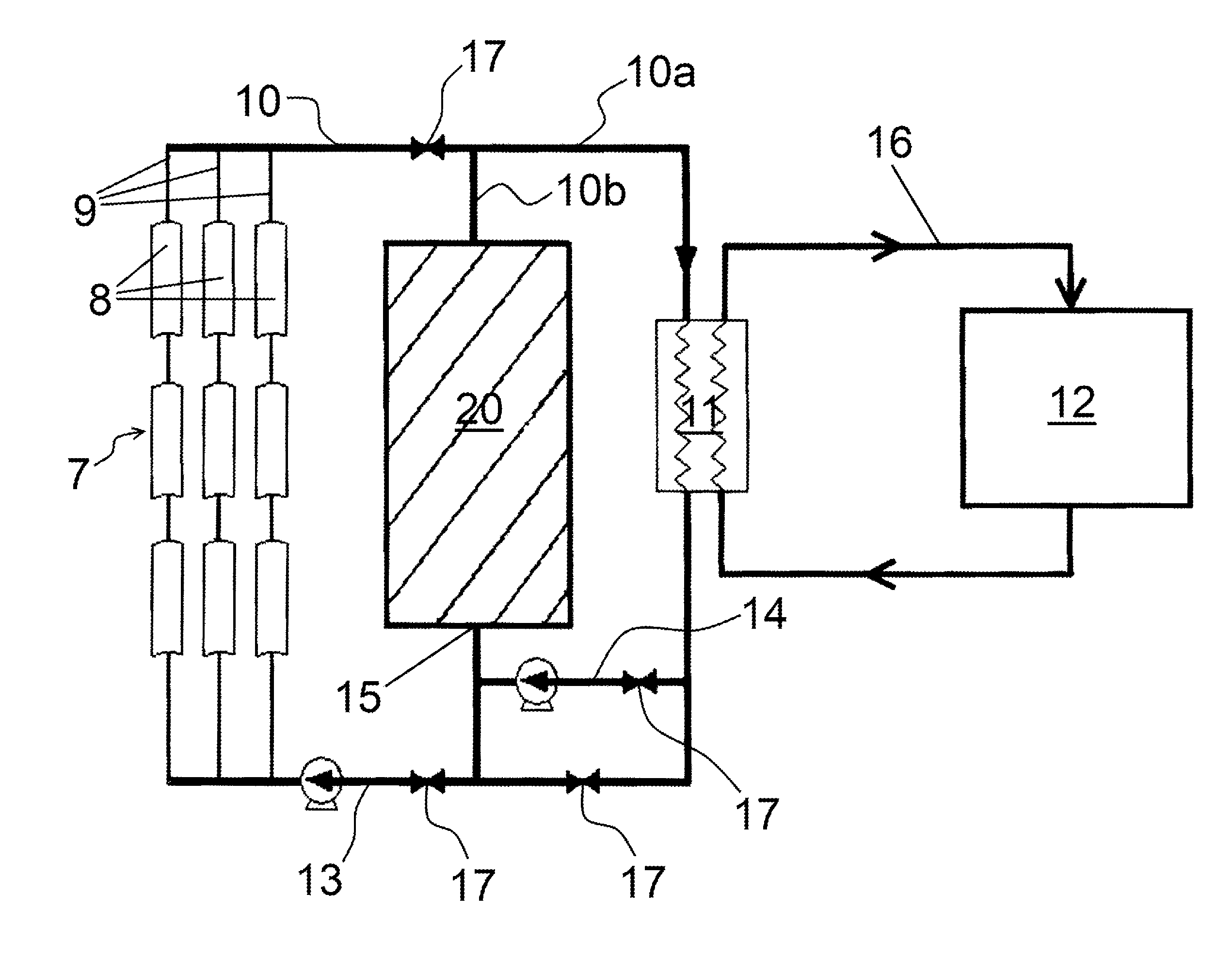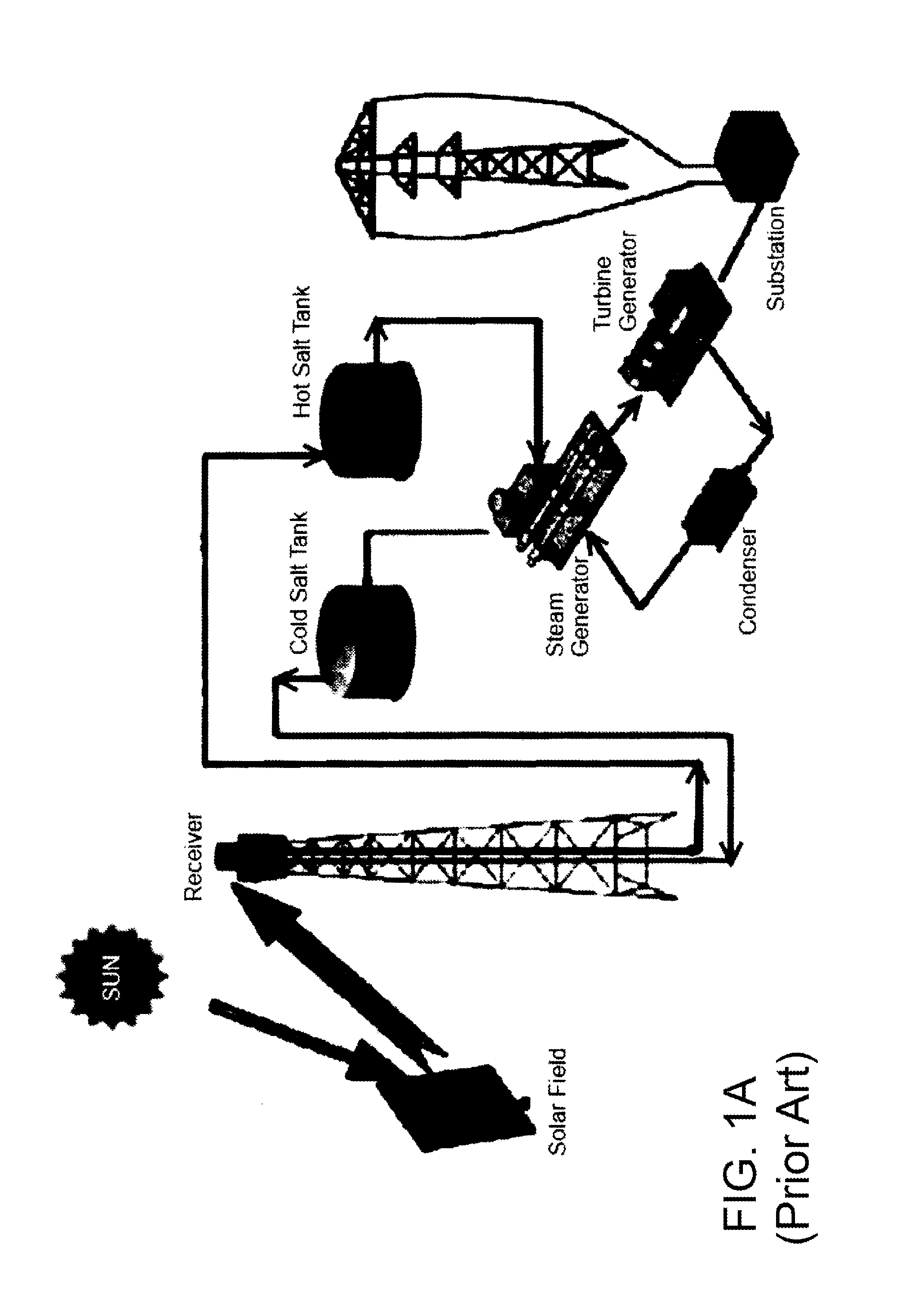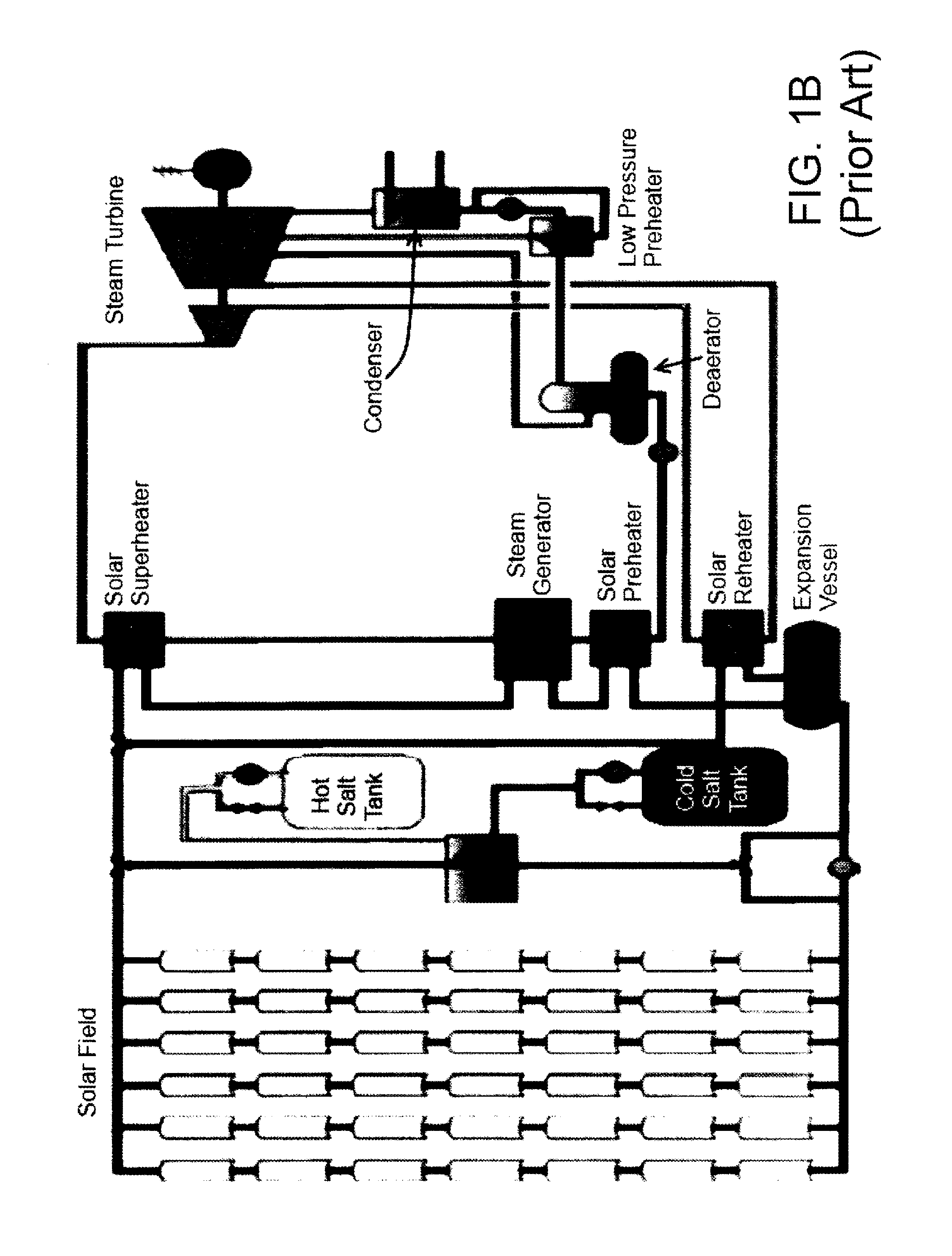Modular latent heat thermal energy storage systems
- Summary
- Abstract
- Description
- Claims
- Application Information
AI Technical Summary
Benefits of technology
Problems solved by technology
Method used
Image
Examples
example 1
[0083]In this example, a 50-MW CSP plant with an eight-hour charging cycle and a twelve-hour discharging cycle is illustrated. The latent heat storage medium was magnesium chloride containing aligned ligament graphite foam as the thermal diffusion substrate. The PCM / foam combination had a thermal conductivity of about 30 W / mK and a foam porosity of about 90 percent, i.e., about 90 percent PCM and about 10 percent foam by volume. In an embodiment of the invention, most of the thermal conductivity is provided by the foam inasmuch as thermal conductivity of PCM alone is under approximately 0.5W / mK. The HTF conduits were fabricated from Inconel 617. The HTF was FLiNaK.
[0084]The size of the LHTES system varied according to an identified relationship between the HTF flow rate and the size of the HTF conduits. The inventors determined that a flow rate of 0.5 m / s and a NPS 8, SCH 10 HTF conduit (outside diameter of 219.08 mm; thickness of 3.759 mm) produced a system with the least capital ...
example 2
[0085]In this example, a 100-MW CSP plant with an eight-hour charging cycle and a twelve-hour discharging cycle will be considered. This LHTES system requires 4290 modules. The modules were spaced 0.54 m from center to center, which required a module cluster diameter of 34.6 m. Magnesium chloride supported on 90% porous aligned ligament graphite was used as the latent heat storage medium. The HTF was FLiNaK. The HTF pipes were Inconel 617 of size NPS 2, SCH 120. During charging, the HTF was set to a flow rate of 0.15 m / s. During discharging, the HTF was set to a flow rate of 0.1 m / s.
[0086]The following are temperature measurements for various components of the system. The latent heat storage medium had an initial temperature of 620° C. During charging the HTF had an inlet temperature of 820° C. and an outlet temperature of 765° C. The HTF remained above the PCM melt temperature along substantially the entire module length, and the temperature difference between the HTF and the PCM w...
example 3
[0088]In this example, the LHTES system featured the same specifications as that of Example 2 with the exception that the module 30 was cascaded. One method of fabricating a cascading module is to slide each preformed PCM / foam section over the HTF pipe in succession. The interface between two different PCM sections is not important because the heat transfer is in the radial, not axial, direction. The module was comprised of equal volumes of sodium chloride and magnesium chloride. The magnesium chloride was positioned downstream of the sodium chloride within the latent heat storage media 40. The sodium chloride section was in direct contact with the magnesium chloride section. The thermal diffusion substrate was aligned ligament graphite foam of 90% porosity. These changes resulted in slightly higher module outlet temperatures: 773° C. during charging and 665° C. during discharging.
[0089]The overall exergy efficiency of this system was calculated to be 97.8%. This example shows that ...
PUM
 Login to View More
Login to View More Abstract
Description
Claims
Application Information
 Login to View More
Login to View More - R&D
- Intellectual Property
- Life Sciences
- Materials
- Tech Scout
- Unparalleled Data Quality
- Higher Quality Content
- 60% Fewer Hallucinations
Browse by: Latest US Patents, China's latest patents, Technical Efficacy Thesaurus, Application Domain, Technology Topic, Popular Technical Reports.
© 2025 PatSnap. All rights reserved.Legal|Privacy policy|Modern Slavery Act Transparency Statement|Sitemap|About US| Contact US: help@patsnap.com



